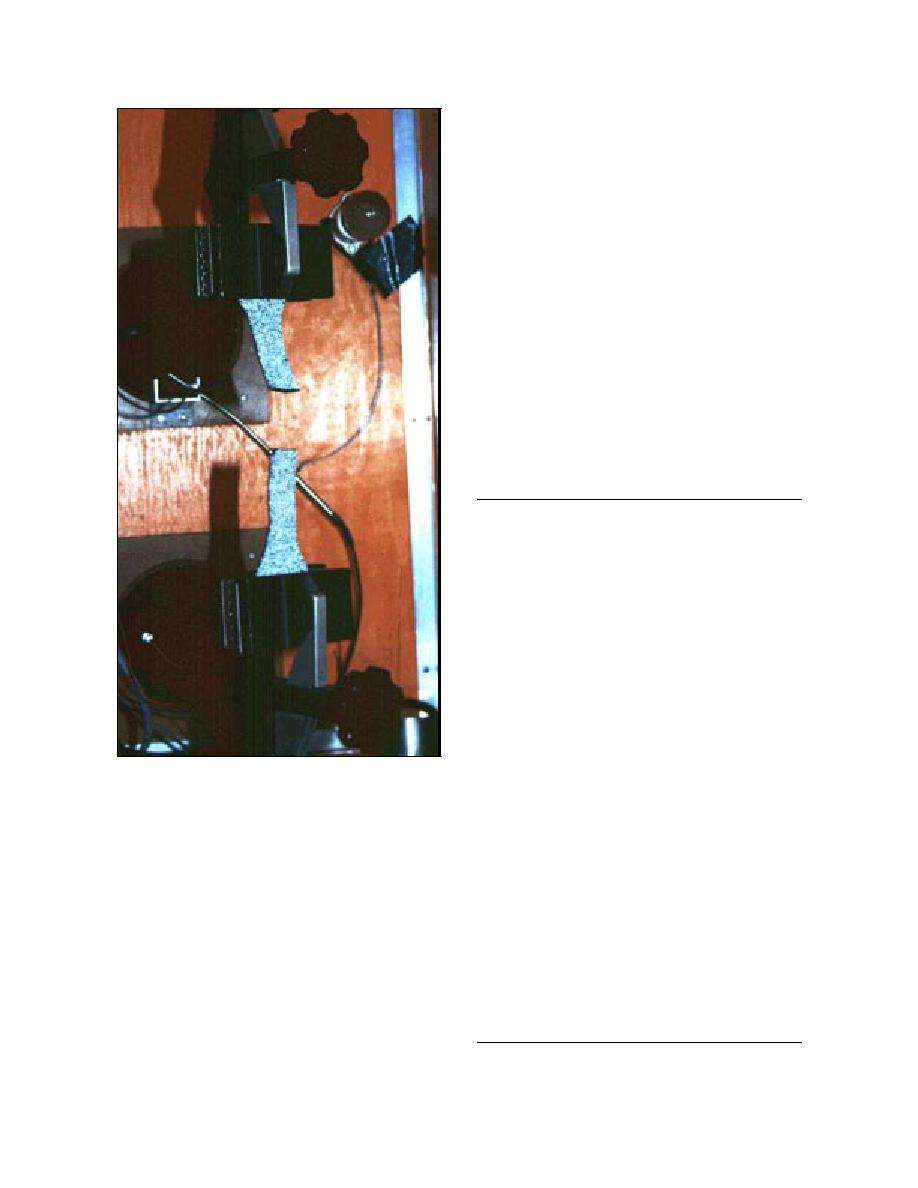
membrane, which only stretched 2% before fail-
ing. Thus, all of the membranes, except Royston,
showed about equal ability to accommodate
movement. We cannot comment as to whether
these membranes are sufficient to accommodate
the movement of an active crack on a bridge.
PUNCTURE
The primary purpose of a bridge membrane is
defeated if the membranes are punctured by any
means. Quality control during manufacture, trans-
port and installation can help to prevent punctur-
ing the membrane in new decks. Once the mem-
brane is laid, new threats commonly occur. Debris
Table 3. Tensile test results.
Tensile strength Elongation at
Test
at failure
failure
temperature
(F)
Manufacturer
(lbf/in.)
(%)
W.R. Grace
73.4
14
70
101.4
15
40
111.0
15
23
112.3
15
14
122.5
18
4
Soprema
138.4
46
70
152.7
33
40
173.1
36
23
175.0
25
14
179.4
14
4
Polyguard
111.8*
21*
70
200.3
12
40
214.6
12
23
220.7
13
14
239.8
12
4
Figure 6. Tension test setup.
Protecto Wrap
64.4
12
70
63.4
14
40
74.3
14
23
4F (20C). The others strength increased
81.3
14
14
100.9
14
4
anywhere from a third to two-thirds. Of all the
membranes, the Polyguard membrane provided
Royston
60.0
2
70
the most resistance against splitting at all tempera-
74.7
2
40
tures.
89.1
2
23
97.8
2
14
Table 3 also shows how well a membrane can
121.32
2
4
accommodate movement. At room temperature,
the Soprema membrane stands out with its ability
NEI
92.5
20
70
to stretch 46% before rupturing compared to less
107.4
18
40
than 20% for all the other membranes. However,
110.1
17
23
108.6
17
14
this room-temperature advantage quickly dimin-
115.8
15
4
ished with each drop in temperature. At 4F, the
Soprema membrane was no better than the oth-
*Membrane pulled out of grips; it did not break.
ers. The only exception to this was the Royston
Values represent the average of up to three tension tests.
9



 Previous Page
Previous Page
